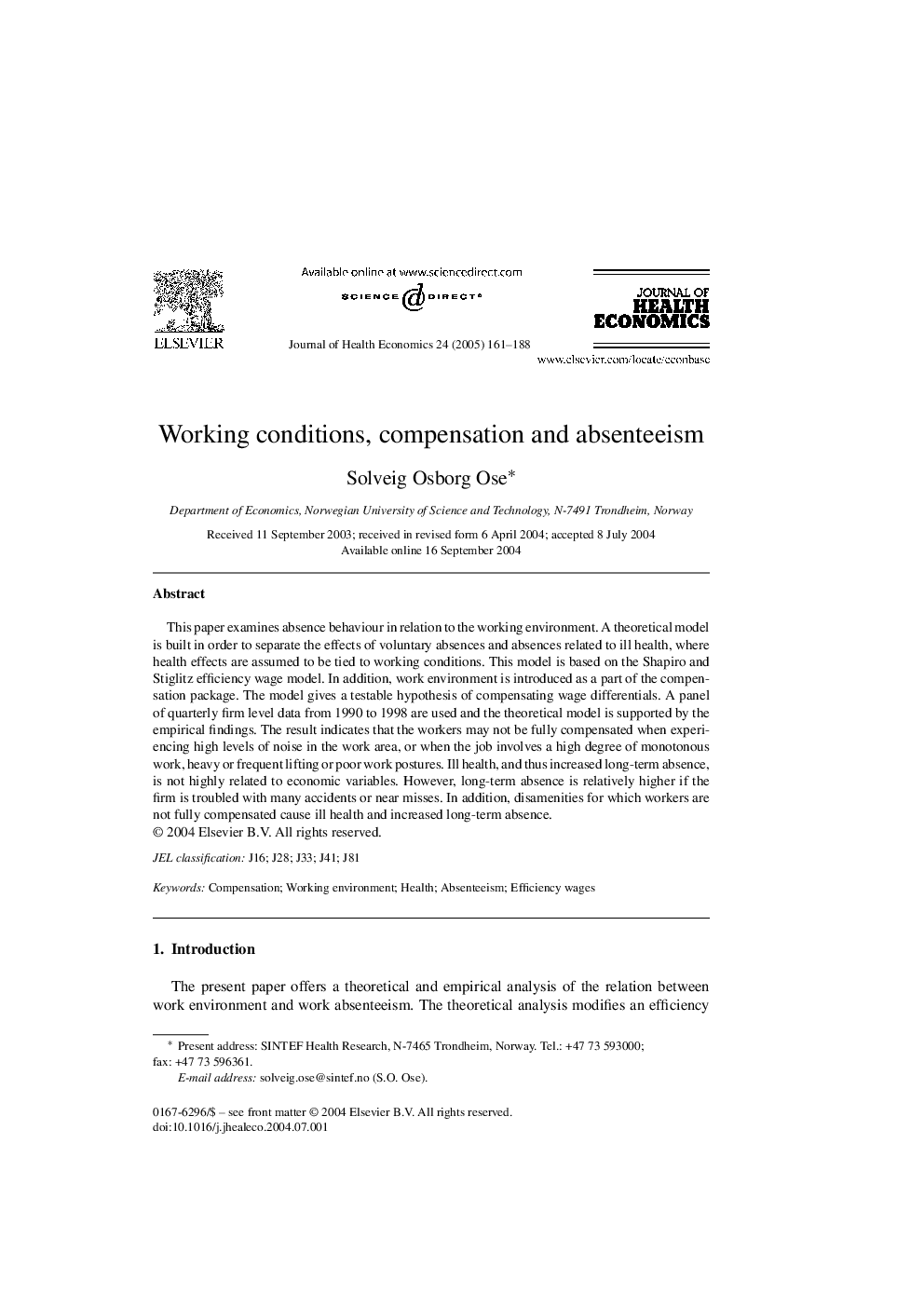| Article ID | Journal | Published Year | Pages | File Type |
|---|---|---|---|---|
| 10476821 | Journal of Health Economics | 2005 | 28 Pages |
Abstract
This paper examines absence behaviour in relation to the working environment. A theoretical model is built in order to separate the effects of voluntary absences and absences related to ill health, where health effects are assumed to be tied to working conditions. This model is based on the Shapiro and Stiglitz efficiency wage model. In addition, work environment is introduced as a part of the compensation package. The model gives a testable hypothesis of compensating wage differentials. A panel of quarterly firm level data from 1990 to 1998 are used and the theoretical model is supported by the empirical findings. The result indicates that the workers may not be fully compensated when experiencing high levels of noise in the work area, or when the job involves a high degree of monotonous work, heavy or frequent lifting or poor work postures. Ill health, and thus increased long-term absence, is not highly related to economic variables. However, long-term absence is relatively higher if the firm is troubled with many accidents or near misses. In addition, disamenities for which workers are not fully compensated cause ill health and increased long-term absence.
Related Topics
Health Sciences
Medicine and Dentistry
Public Health and Health Policy
Authors
Solveig Osborg Ose,
